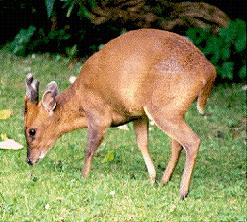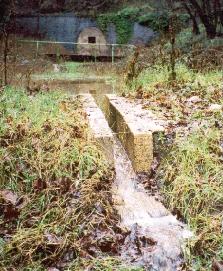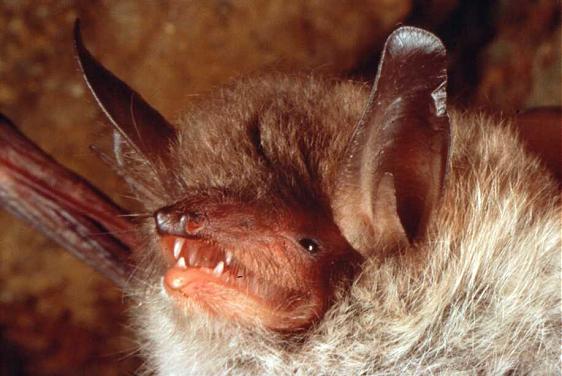|
Special Wildlife Conservation Features
|
|
The valley formed by this cutting is very unusual in Oxfordshire because its 25-degree slopes are much steeper than in any valley produced in this area by natural processes. This means that it receives rather less sunlight than other valleys, is capable of retaining moisture better than other valleys, and the valley bottom experiences very low temperatures in winter, and very high temperatures when sheltered from any breeze in mid-summer. This very unusual microclimate makes it an ideal place for the conservation of sustainable ponds and wetlands, which might otherwise dry out elsewhere during any of the future very hot summers which are confidently forecast for the U.K. as part of the global warming of the atmosphere, which since 1980 has been accelerating faster than at any other period in the last 10,000 years.
 In addition to the small wetland area beside the stream near the Butts Road bridge, there is a pond near the railway tunnel entrance, which is fed by a steady flow of clear water, which has seeped down through about 70 metres of rock above the tunnel. This pond is used by frogs and toads for breeding every spring, and supports a very rich population of invertebrates including abundant fresh water shrimps and the larvae of caddis flies and dragon flies. The log pile footbridge nearby provides a safe refuge for amphibians against predation by such birds as the Heron, and is also a good habitat for insects. Pied and Grey Wagtails are frequently seen here, and this is a drinking place for Roe deer, Muntjac deer, badgers, hedgehogs and foxes.
In addition to the small wetland area beside the stream near the Butts Road bridge, there is a pond near the railway tunnel entrance, which is fed by a steady flow of clear water, which has seeped down through about 70 metres of rock above the tunnel. This pond is used by frogs and toads for breeding every spring, and supports a very rich population of invertebrates including abundant fresh water shrimps and the larvae of caddis flies and dragon flies. The log pile footbridge nearby provides a safe refuge for amphibians against predation by such birds as the Heron, and is also a good habitat for insects. Pied and Grey Wagtails are frequently seen here, and this is a drinking place for Roe deer, Muntjac deer, badgers, hedgehogs and foxes.
Separated from this pond by a clay dam and the log bridge, is a very different wetland, into which silt and nutrients are washed down by a vigorous stream from a field drainage system in the farmland on the top of the hill. This wetland becomes a pond in wet weather, and supports the growth of irises and reeds, and forms an ideal breeding ground for large numbers of flies, which are in turn, very attractive food for the bats which frequent this valley in the summer. Water Voles have also been seen here.
 Downstream of the wetland serving as a silt trap, is a larger wetland which becomes a temporary pond only in very wet weather. This has a rich soil fauna and a very moist subsoil because it receives the filtered overflow and leakage from the pond and the silt trap upstream. This is also a breeding ground for insects, and is a popular feeding area for birds such as Robins, Blackbirds and Thrushes. All these wetlands are designed to promote biodiversity, and should be sustainable as the British climate changes, because tree shadows protect them against excessive drying out by the sun, even in mid-summer, and the systems of dams, sluices and underground drains prevent any cloudbursts in winter from washing away all the pond life.
Downstream of the wetland serving as a silt trap, is a larger wetland which becomes a temporary pond only in very wet weather. This has a rich soil fauna and a very moist subsoil because it receives the filtered overflow and leakage from the pond and the silt trap upstream. This is also a breeding ground for insects, and is a popular feeding area for birds such as Robins, Blackbirds and Thrushes. All these wetlands are designed to promote biodiversity, and should be sustainable as the British climate changes, because tree shadows protect them against excessive drying out by the sun, even in mid-summer, and the systems of dams, sluices and underground drains prevent any cloudbursts in winter from washing away all the pond life.
A wildflower meadow has been established on the flat strip of clay beside the gravel path in the bottom of this valley, and every autumn, after the flowers have dropped their seeds, this is cut, and the green cuttings removed to a compost heap, which is in itself another wildlife habitat, intended for the breeding of Slow Worms or Grass Snakes. The wildflowers, including nettles, attract a variety of moths and butterflies, as well as hoverflies and bees, including Mason Bees which live in the brick parapet above the tunnel entrance.
The deciduous woodland on the steep slopes and around the upper rim of the cutting includes a significant number of oaks and hawthorns. Pigeons, Collared Doves, Green Woodpeckers, Greater Spotted Woodpeckers, Jays, Magpies and Wrens are frequently seen in these woods. There is one apple tree which also attracts wildlife. Grey Squirrels, mice, moles and voles are active on the drier upper slopes. Twelve nesting boxes are installed for tits, of which 6 were occupied by Blue Tits and one possibly by Long-Tailed Tits, as their feathers were certainly found there in 2002. The edges of this woodland include some blackberry bushes, and these, together with the rich insect life, provide a wide variety of food for the birds.
The disused railway tunnel is owned by Oxfordshire County Council, and is now maintained as a bat hibernaculum, or winter hibernating refuge for five species of bats: Daubentonís, Brown Long-Eared, Nattererís, Brandtís, and Whiskered Bats.
Nattererís Bat Photo: John Kaczanow, Bat Conservation Trust

The bat hibernaculum was created by the County Council in 2002 with major financial assistance from One World Wildlife (formerly The Biodiversity Trust) and the Esmee Fairbairn Foundation, and will be monitored and maintained by local volunteers from the Oxfordshire Bat Group and the Bat Conservation Trust. This tunnel is approximately 485 metres long, and provides a very moist and stable cool environment for hibernating bats. Some additional bat boxes will be installed outside the tunnel as additional roosting places. Soon after sunset in summer the Daubentonís Bats start catching flies and moths by swooping very low over the ponds, and other bats including the more
common Pipistrelle bats, feed on flies and moths flying under the trees.
| Copyright ©
Martin Harris & Alan Simpson 2003 |
Back to the Index |
Last Updated 2003-04-17 |
 In addition to the small wetland area beside the stream near the Butts Road bridge, there is a pond near the railway tunnel entrance, which is fed by a steady flow of clear water, which has seeped down through about 70 metres of rock above the tunnel. This pond is used by frogs and toads for breeding every spring, and supports a very rich population of invertebrates including abundant fresh water shrimps and the larvae of caddis flies and dragon flies. The log pile footbridge nearby provides a safe refuge for amphibians against predation by such birds as the Heron, and is also a good habitat for insects. Pied and Grey Wagtails are frequently seen here, and this is a drinking place for Roe deer, Muntjac deer, badgers, hedgehogs and foxes.
In addition to the small wetland area beside the stream near the Butts Road bridge, there is a pond near the railway tunnel entrance, which is fed by a steady flow of clear water, which has seeped down through about 70 metres of rock above the tunnel. This pond is used by frogs and toads for breeding every spring, and supports a very rich population of invertebrates including abundant fresh water shrimps and the larvae of caddis flies and dragon flies. The log pile footbridge nearby provides a safe refuge for amphibians against predation by such birds as the Heron, and is also a good habitat for insects. Pied and Grey Wagtails are frequently seen here, and this is a drinking place for Roe deer, Muntjac deer, badgers, hedgehogs and foxes.
 Downstream of the wetland serving as a silt trap, is a larger wetland which becomes a temporary pond only in very wet weather. This has a rich soil fauna and a very moist subsoil because it receives the filtered overflow and leakage from the pond and the silt trap upstream. This is also a breeding ground for insects, and is a popular feeding area for birds such as Robins, Blackbirds and Thrushes. All these wetlands are designed to promote biodiversity, and should be sustainable as the British climate changes, because tree shadows protect them against excessive drying out by the sun, even in mid-summer, and the systems of dams, sluices and underground drains prevent any cloudbursts in winter from washing away all the pond life.
Downstream of the wetland serving as a silt trap, is a larger wetland which becomes a temporary pond only in very wet weather. This has a rich soil fauna and a very moist subsoil because it receives the filtered overflow and leakage from the pond and the silt trap upstream. This is also a breeding ground for insects, and is a popular feeding area for birds such as Robins, Blackbirds and Thrushes. All these wetlands are designed to promote biodiversity, and should be sustainable as the British climate changes, because tree shadows protect them against excessive drying out by the sun, even in mid-summer, and the systems of dams, sluices and underground drains prevent any cloudbursts in winter from washing away all the pond life.
